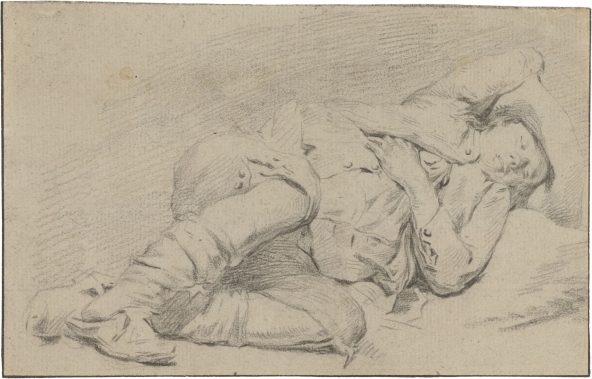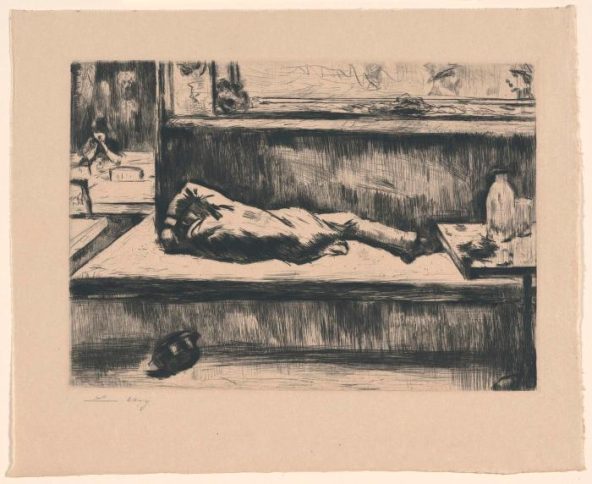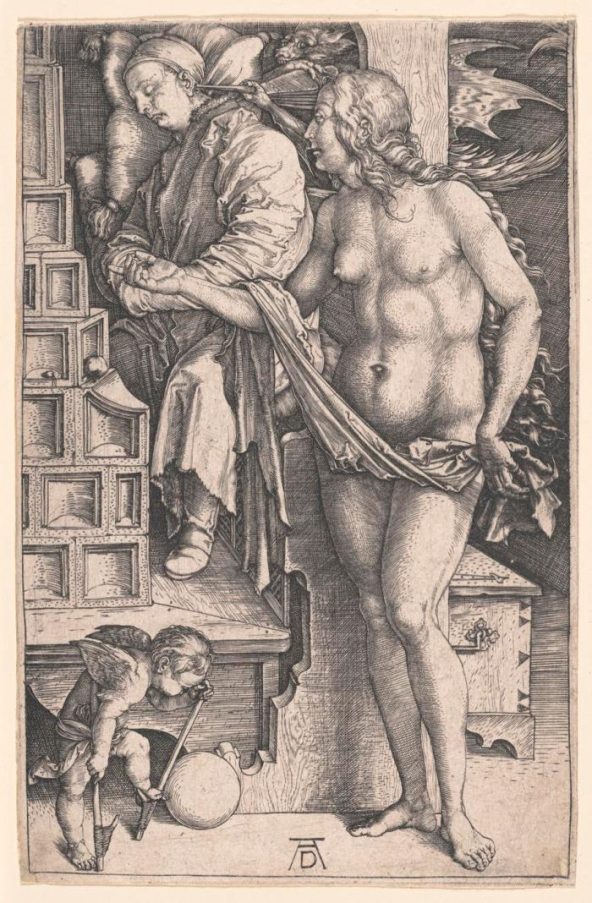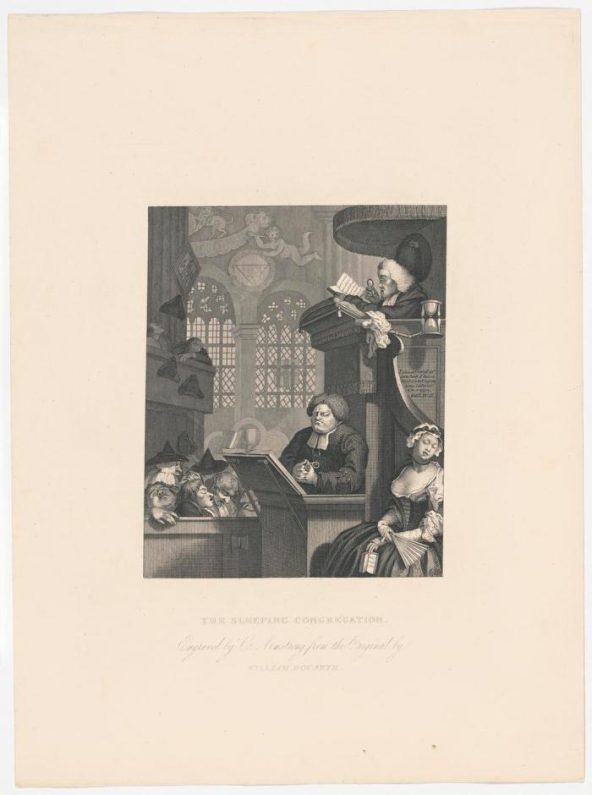Article: Idle Sleep
Focus on the Peck Feature
Artists have depicted the theme of sleep for centuries. The meaning of such images can be numerous depending on who sleeps, where and how they sleep, and their reasons for doing so. Using a drawing attributed to seventeenth-century Dutch artist Jacob Duck of a slumbering youth as inspiration, this Focus on the Peck Collection installation explores the ways in which artists have assigned moral judgments to people who have fallen asleep unintentionally. Ranging in date from the fifteenth to the nineteenth century, these works warn against sleep obtained through idleness and laziness, illustrating how slumbering without earning it can have detrimental effects.
On average, humans spend about a third of their lives sleeping. It is no surprise, then, that artists have depicted the theme in their works for centuries. Visual representations of sleep can carry multiple meanings depending on who is sleeping, where and how they sleep, and their reasons for doing it. While some artists focus on the internal, psychological aspects of sleeping and dreaming, others consider the personal and social causes and consequences of sleeping, especially if the act is unplanned.
Prior to the 1600s, sleeping figures were most commonly associated with sloth, one of Christianity’s seven deadly sins. As a fountainhead for other vices, it was considered the worst of sins and was often represented alongside and connected to others, such as gluttony, depicted by overindulgence, and lust. Using a drawing attributed to seventeenth-century Dutch artist Jacob Duck of a slumbering youth as inspiration, this Focus on the Peck Collection installation explores the ways in which artists have assigned moral judgments to people who have fallen asleep unintentionally. Ranging in date from the fifteenth to the nineteenth century, these works warn against sleep obtained through idleness and laziness, illustrating how slumbering without earning it can have detrimental effects.
A Sleeping Youth

attributed to Jacob Duck, Dutch, c. 1600 – 1667, A Sleeping Youth, c. 1650-60, black chalk, The Peck Collection, 2017.1.23.
See A Sleeping Youth in more detail here.
In his theatrical representations of brothel, tavern, and guardroom scenes, Jacob Duck regularly incorporated sleeping figures that, while amusing at times, often carried moral messages. Here, a fully dressed young man, probably a soldier, lies asleep on the ground with his proper right arm draped over his still behatted head. The buttons of his jacket and trouser legs have come undone, resulting in a disheveled appearance. In Duck’s paintings, sleeping soldiers represented various unfavorable conditions, such as idleness and intoxication, but could also signify neutral figures that rest for pragmatic reasons. Without more visual clues, it is difficult to determine any particular misconduct or overindulgence on the part of Duck’s figure, other than that he is sleeping fully dressed when likely not meant to do so.
The Absinthe Drinker

Lesser Ury, German, 1861 – 1931, The Absinthe Drinker, 1920, drypoint, Burton Emmett Collection, 58.1.2271.
See The Absinthe Drinker in more detail here.
For centuries, drunken sleep was associated with the sin of gluttony, or overconsumption. As the title of this print indicates, the man lying in the foreground has succumbed to the powerful and intoxicating influence of absinthe. He sleeps on a bench inside a restaurant, with arm overhead, his hat laying on the floor. As others converse outside and exhibit perfectly acceptable behavior, he appears isolated and alone. The sleeping figure, in this public, unconscious state, provides a powerful exemplar against overindulgence and the accompanying negative social consequences.
The Dream of the Doctor (The Temptation of the Idler)

Albrecht Dürer, German, 1471 – 1528, The Dream of the Doctor (The Temptation of the Idler), c. 1498, engraving, Ackland Fund, 66.8.1.
See The Dream of the Doctor (The Temptation of the Idler) in more detail here.
“Idling is the pillow of the devil.” This early proverb warns against the sin of sloth or laziness, a theme Albrecht Dürer explores in this engraving. Here, a scholar is lulled into sleep by the warmth of a large stove. As his head rests against a large pillow, the devil blows fantasies into his ear using fireplace bellows. The demonic provocation inspires the scholar’s subconscious to conjure Venus, the classical goddess of love, whose nude figure embodies sexual temptation. The message is clear: the sin of idleness acts as a wellspring for other immoral behaviors like lust. The opportunistic devil, therefore, will always take advantage of a lack of vigilance.
The Sleeping Congregation

Cosmo Armstrong, British, 1781 – 1836 (or later), after William Hogarth, British, 1697 - 1764, The Sleeping Congregation, from The Works of Hogarth, 1833, engraving, Provenance Unknown, L87.55.724.
See The Sleeping Congregation in more detail here.
Unable to remain attentive during a long-winded sermon, members of the congregation slumber while the preacher ironically reads from the book of Matthew “Come to me, all ye that labor, and are heavy laden, and I will give you rest.” (Mt 11:28). Just as the sleeping audience represents a poor model of Christian piety, so too does the preacher who remains metaphorically asleep to the spiritual needs of his people. Meanwhile, the watchful clerk at the center leers slyly at the sleeping young woman’s bosom in the foreground. Although the text of her book indicates she likely dreams of marriage, her exposed state has actually made her an object of unchaste desire.
